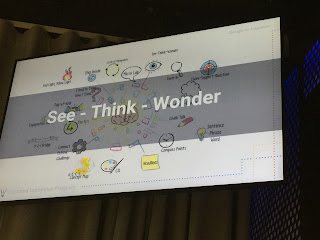Dancing Spaghetti
Materials Large beaker 150ml graduated cylinder 50ml cups of vinegar 2 tsp baking soda 50ml water 8-10 sticks of broken spaghetti. Food colouring Procedure Fill the beaker with water Measure and pour 100 ml of vinegar into the beaker. add the food colouring - if needed Add two tablespoons of baking soda to the water and mix thoroughly. Put eight to ten pieces of broken spaghetti in the beaker and wait until the spaghetti settles to the bottom. A chemical reaction will take place, causing the spaghetti to move in the beaker. Repeat experiment with different ratios of water, vinegar, and baking soda. Whats happening The noodles will bob up and down for several minutes. This noodle “dance” is captivating to watch. Since the surface of the noodles is rough, tiny bubbles of carbon dioxide gas are attracted to it. These bubbles increase the volume of the noodle substantially, but contribute very little to its mass. As a result, the...
